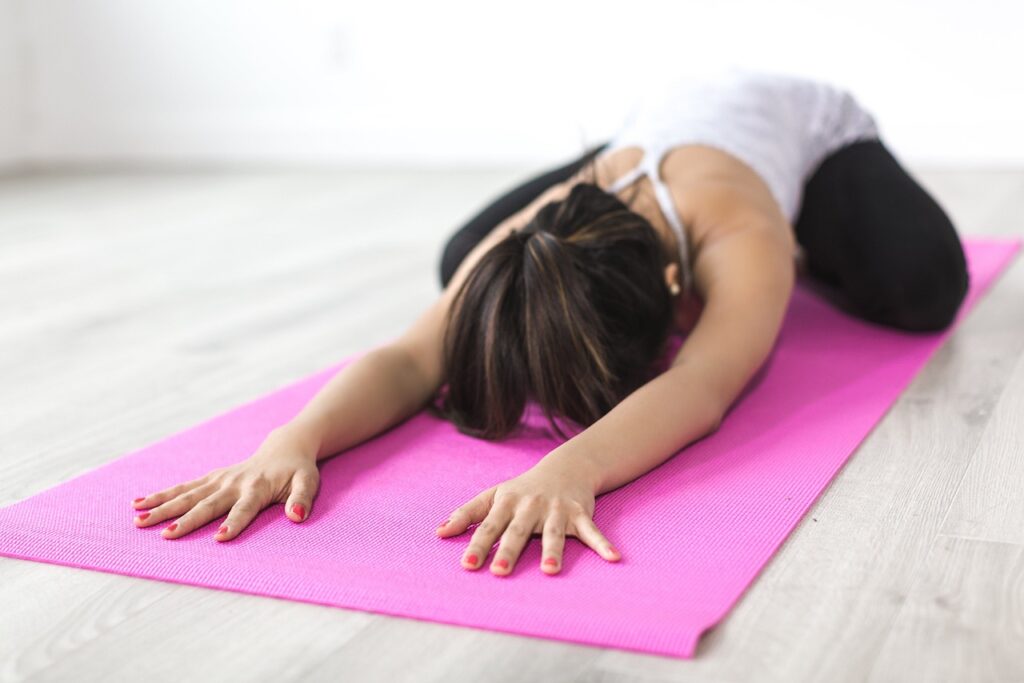If you’re constantly juggling work, family, and personal commitments, you know how overwhelming life can feel. The pressure builds, your mind races, and before you know it, you’re caught in a cycle of stress. That’s why it’s so important to find quick and practical ways to reduce stress and anxiety – without needing to overhaul your entire routine.
In this post, we’ll explore simple 5-minute daily practices that can help calm your mind, boost your mood, and improve your emotional resilience. Whether you’re a busy professional, a stay-at-home parent, or someone just trying to stay afloat, these bite-sized strategies are designed for real life. Let’s dive into the top stress-busting practices that actually work – and only take five minutes a day.
1. Deep Breathing Exercises to reduce stress and anxiety
One of the simplest yet most powerful ways to reduce stress and anxiety is deep breathing. When you’re anxious, your body shifts into “fight or flight” mode – your heart rate speeds up, breathing becomes shallow, and your muscles tense. Deep breathing flips that response by activating your parasympathetic nervous system, helping your body relax.
A popular method is the 4-7-8 technique: inhale through your nose for four seconds, hold for seven, and exhale slowly through your mouth for eight. This rhythm slows the heart rate and promotes a sense of calm almost immediately. Best of all, it requires no tools or preparation. You can do it at your desk, in your car, or even in the bathroom between meetings. The downside? It may feel unfamiliar or ineffective at first, especially if you’re new to breathwork. But with consistent daily use, deep breathing becomes an automatic, go-to tool for stress relief – anytime, anywhere.
Key Features:
- Involves slow, intentional breaths
- Typically follows a rhythm like 4-7-8 breathing (inhale for 4 seconds, hold for 7, exhale for 8)
- Requires no tools – can be done anywhere
Pros:
- Immediate calming effect
- Scientifically proven to activate the parasympathetic nervous system
- Portable and accessible at any time
Cons:
- Can feel awkward at first if you’re not used to focused breathing
- Some people may need guidance or practice to feel the full effects

2. 5-Minute Journaling
Journaling for just five minutes a day can create a powerful shift in how you manage stress and anxiety. The act of putting your thoughts on paper – or typing them into a note app – helps organize your mind and reduce mental clutter. Gratitude journaling, for example, involves writing three things you’re thankful for each day. This simple practice rewires your brain to focus on positives, even during tough times.
Another approach is brain dumping – writing down everything on your mind without judgment to release internal tension. The key is not perfection but consistency. Pros include better emotional regulation, increased self-awareness, and a sense of clarity. However, some people may find it hard to stick to at first, especially if they’re not natural writers. Over time though, journaling becomes a calming ritual – like a daily mental reset. It’s your private space to process emotions, spot patterns, and reflect, all in just five peaceful minutes.
Key Features:
- Prompts like “What am I grateful for today?” or “What’s on my mind?”
- Doesn’t require perfect grammar or spelling – just honesty
- Use paper or a journaling app
Pros:
- Reduces overthinking and emotional buildup
- Helps identify stress triggers
- Encourages mindfulness and self-reflection
Cons:
- May be hard to start if you’re not used to writing
- Requires a quiet moment (which can be tricky in busy households)

3. Guided Meditation or Mindfulness Practice to reduce stress and anxiety
Meditation has long been hailed for its stress-reducing benefits – and the best part is, you don’t need to sit for an hour in silence to feel the effects. Even five minutes of guided meditation can lower cortisol levels, relax your nervous system, and increase mental clarity. Using free apps like Insight Timer or Calm, you can choose short sessions tailored to anxiety, focus, or emotional balance. These usually include a calming voice, soft music, and gentle cues to guide your attention to the breath or body. Mindfulness meditation, on the other hand, encourages you to stay present – simply noticing your thoughts, feelings, and sensations without judgment.
While meditation might be hard at first (especially if your mind feels busy), it gets easier with practice. The key benefit is that it builds mental resilience over time. Within just a few weeks, most people report feeling less reactive and more grounded – one five-minute sit at a time. Give it a shot and see if it is the right way for you to reduce stress and anxiety in your daily life.
Key Features:
- Uses apps like Headspace, Insight Timer, or YouTube for guided sessions
- Focuses on breath, body awareness, or calming imagery
- No experience needed
Pros:
- Scientifically linked to lower cortisol levels (the stress hormone)
- Helps build long-term resilience against anxiety
- Accessible via phone, computer, or smart speaker
Cons:
- Requires focus and a quiet space
- Results are cumulative; may not feel instant for everyone

4. Stretching or Gentle Movement
If you sit for most of the day or carry tension in your body, gentle movement is a fantastic way to reduce stress and anxiety in just five minutes. Physical stress builds up in the muscles, especially in the neck, shoulders, and lower back. Stretching these areas increases blood flow, improves mobility, and releases pent-up tension. Morning is a great time to do light yoga poses like cat-cow, child’s pose, or forward folds. You don’t need a yoga mat or fancy setup – just a soft surface and a quiet space. If you’re more active, five minutes of walking or joint rotations can help.
The pros are numerous: improved posture, better circulation, and a quick hit of endorphins. It’s also an easy way to shift your mental energy and “get out of your head.” The only drawback? If you have chronic pain or mobility limitations, some movements may need adjustment. But overall, it’s an incredibly effective and accessible stress reducer.
Key Features:
- Gentle yoga poses or neck/shoulder stretches
- Great in the morning or after sitting too long
- Can be done with or without a mat
Pros:
- Enhances blood flow and energy
- Loosens physical tension from stress
- Boosts endorphins (your body’s natural feel-good chemicals)
Cons:
- May not be ideal for people with mobility issues
- Some stretches require instruction to avoid strain

5. Visualization or Positive Affirmations
Visualization and affirmations might seem a little “woo-woo” at first glance, but don’t underestimate their ability to influence your mindset and reduce stress and anxiety. Visualization involves imagining a peaceful scene – like walking on a beach or lying in a field under the sun – and immersing yourself in that mental environment. This taps into the brain’s powerful link between imagination and physiology. When done well, it can slow your heart rate, relax your muscles, and help you mentally escape stress – even just for a few minutes.
Affirmations, on the other hand, involve repeating positive statements like “I am safe,” “I am strong,” or “I can handle this.” These can be said silently, out loud, or written down. While it may feel awkward at first, especially if you’re struggling emotionally, research shows that regular affirmation practice can improve self-esteem and emotional control. The trick is consistency – five minutes daily can rewire thought patterns over time.
Key Features:
- Focuses your imagination on calming imagery (beach, forest, etc.)
- Repeats uplifting phrases like “I am calm” or “I can handle this”
- Can be practiced aloud or silently
Pros:
- Builds confidence and emotional control
- Reinforces healthy mental patterns
- Quick and highly customizable
Cons:
- Some people find it cheesy or hard to concentrate
- Requires an open mind and consistency

Quick Overview
| Practice | Tools Needed | Best Time to Use | Benefits | Difficulty |
|---|---|---|---|---|
| Deep Breathing | None | Anytime | Calms the nervous system | Easy |
| 5-Minute Journaling | Journal/app | Morning or evening | Reduces overthinking, gratitude boost | Easy |
| Guided Meditation | Phone/earbuds | Morning, midday, bedtime | Lowers stress hormones | Moderate |
| Stretching | None/mat | Morning or work breaks | Relieves muscle tension | Easy |
| Visualization/Affirmations | None | Morning or stressful times | Improves mindset and confidence | Easy |
Quick Answers to Common Questions
1. Do 5-minute practices really make a difference?
Yes. While five minutes may seem short, repeated daily habits have a compounding effect. Even short bursts of calm can regulate your nervous system, build resilience, and interrupt stress patterns.
2. Which practice is best for beginners?
Deep breathing is usually the easiest place to start. It’s simple, requires no special setup, and gives almost instant results. From there, you can experiment with journaling or meditation.
3. Can I combine more than one practice?
Absolutely! You can do deep breathing followed by a short stretch, or journal after meditating. Just make sure it fits into your day so it feels manageable and not like another task.
Start Small, Stay Consistent
You don’t need a complete lifestyle overhaul to reduce stress and anxiety – just a few intentional minutes each day can make a big difference. Whether it’s breathing deeply, stretching, or writing in a journal, these 5-minute daily practices are simple, effective, and backed by science.
Key takeaways:
- Quick practices are easier to stick with
- Choose what fits your lifestyle and personality
- Consistency beats intensity when it comes to mental wellness
So the next time life feels overwhelming, remember: all it takes is five mindful minutes to reset. Try one of these methods today and notice how even the smallest moment of self-care can lead to big changes.
Let us know what are your ways to reduce stress and anxiety in your daily life. We would love to know.








